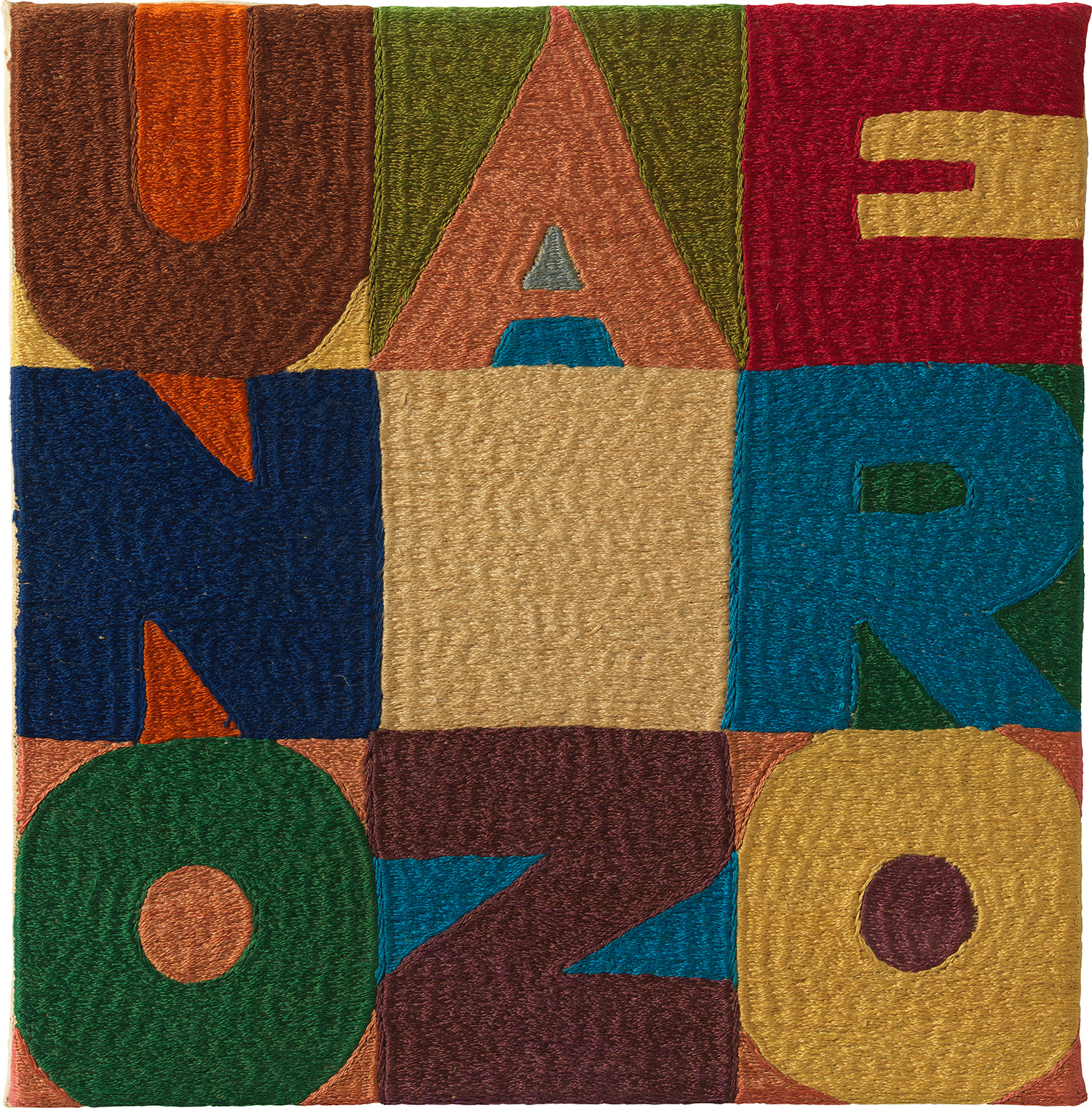

168
Alighiero Boetti
Uno a Zero
signed and inscribed 'alighiero e boetti Kabul' on the overlap
embroidery on fabric
21.5 x 21 cm (8 1/2 x 8 1/4 in.)
Executed circa 1977, this work is accompanied by a certificate of authenticity issued by the Archivio Alighiero Boetti, Rome and is registered with the Archivio Alighiero Boetti, Rome under archive no. 10123.